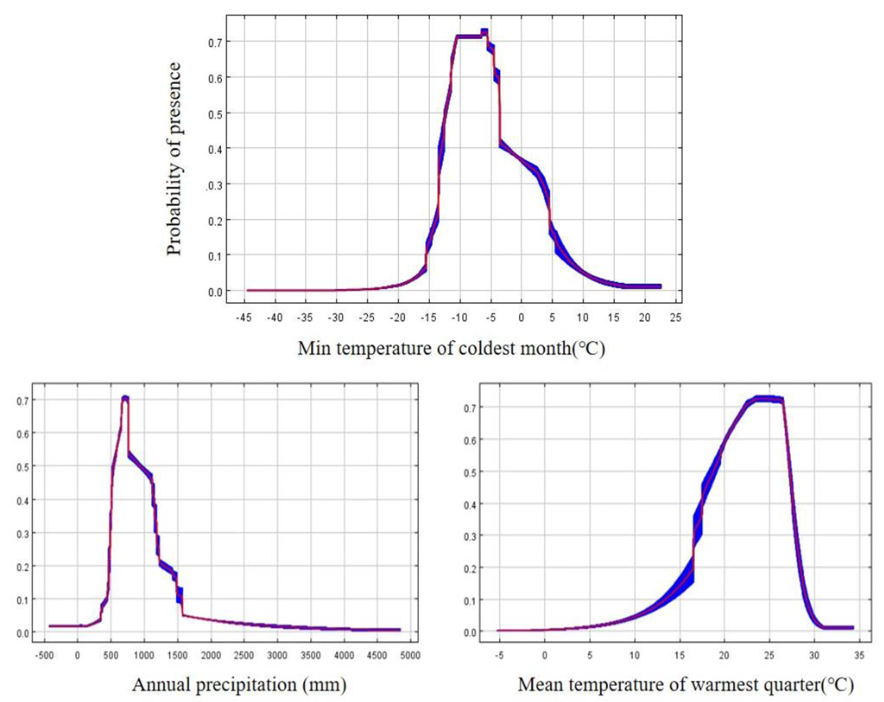Sweet cherry is a fruit tree of significant economic value, with a growing expansion in China. However, identifying the most suitable geographical areas for its cultivation has long been unclear, often leading to economic losses due to poor planning.
A recent study, based on the use of the MaxEnt model, has enabled Chinese researchers to predict potentially suitable areas for the cultivation of this species in China, identifying key environmental factors that influence its distribution.
The MaxEnt model proved highly effective in predicting suitable areas for sweet cherry cultivation, with an accuracy of over 90% in both the training and testing phases. The most relevant environmental factors are the minimum temperature of the coldest month, with a range between -14.5°C and 4.5°C, the average temperature of the warmest quarter, between 21°C and 28°C, and annual rainfall, ranging from 500 mm to 1200 mm. These data highlight how sweet cherries cannot tolerate either extreme cold or heat and are vulnerable to both drought and excess water (precipitation).

Foto 1.
Response curves of MaxEnt-jackknife method and main environment variables. Source: Hongqun Li et al., 2024
The study identified seven major geographical regions in China where sweet cherry cultivation could successfully expand. These regions include southwestern China, comprising parts of Sichuan, Chongqing, Guizhou, and Yunnan; northwestern China, with areas in Shaanxi, Ningxia, and Gansu; and northeastern China, particularly the coastal region of Liaoning. Other regions of potential interest include central areas such as Henan and Hubei, as well as northern China, including Beijing, Tianjing, and parts of Shanxi.
Additionally, other eastern and southern regions, such as Shanghai, Jiangsu, Shandong, and Guangxi, could also be suitable for sweet cherry cultivation, though they may require additional action such as irrigation systems and winter protection.
The research identified 14 provinces or cities in China as the main areas for sweet cherry development, including Shaanxi, Beijing, Tianjing, Shanxi, Hebei, Henan, Shanghai, Jiangsu, Shandong, Sichuan, Guizhou, Yunnan, Liaoning, and Hubei. Another 12 provinces have moderately suitable areas, where it may be necessary to implement certain practices to optimize growing conditions. These include Chongqing, Guizhou, Yunnan, Shaanxi, Ningxia, Liaoning, Hubei, Hunan, Zhejiang, Anhui, Jiangxi, and Guangxi.

Foto 2.
The potential geospatial distribution of P. avium in China during the periods of 1970–2000. Source: Hongqun Li et al., 2024
The results of the study provide a scientific foundation to guide the planning of sweet cherry cultivation in China. While the MaxEnt model has proven to be an effective tool for predicting the potential distribution of sweet cherries, the study emphasizes the need to incorporate additional environmental variables, such as soil characteristics, local solar radiation, and extreme weather events, to further improve the accuracy of predictions.
In conclusion, sweet cherries require specific environmental conditions to ensure satisfactory production, and studies like this provide a more solid and objective basis for investment decisions.
Source: Hongqun Li ,Xiaolong Peng,Peng Jiang,Ligang Xing,Xieping Sun (2024), Prediction of potential suitable distribution for sweet cherry (Prunus avium), PlosOne. https://doi.org/10.1371/journal.pone.0294098
Andrea Giovannini
University of Bologna (IT)
Cherry Times - All rights reserved












